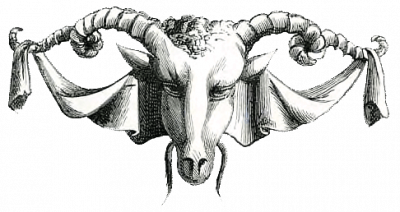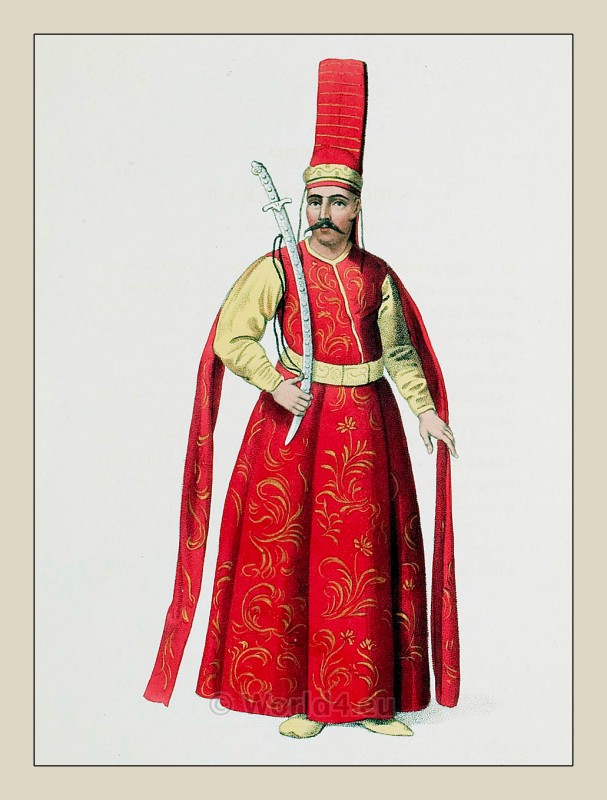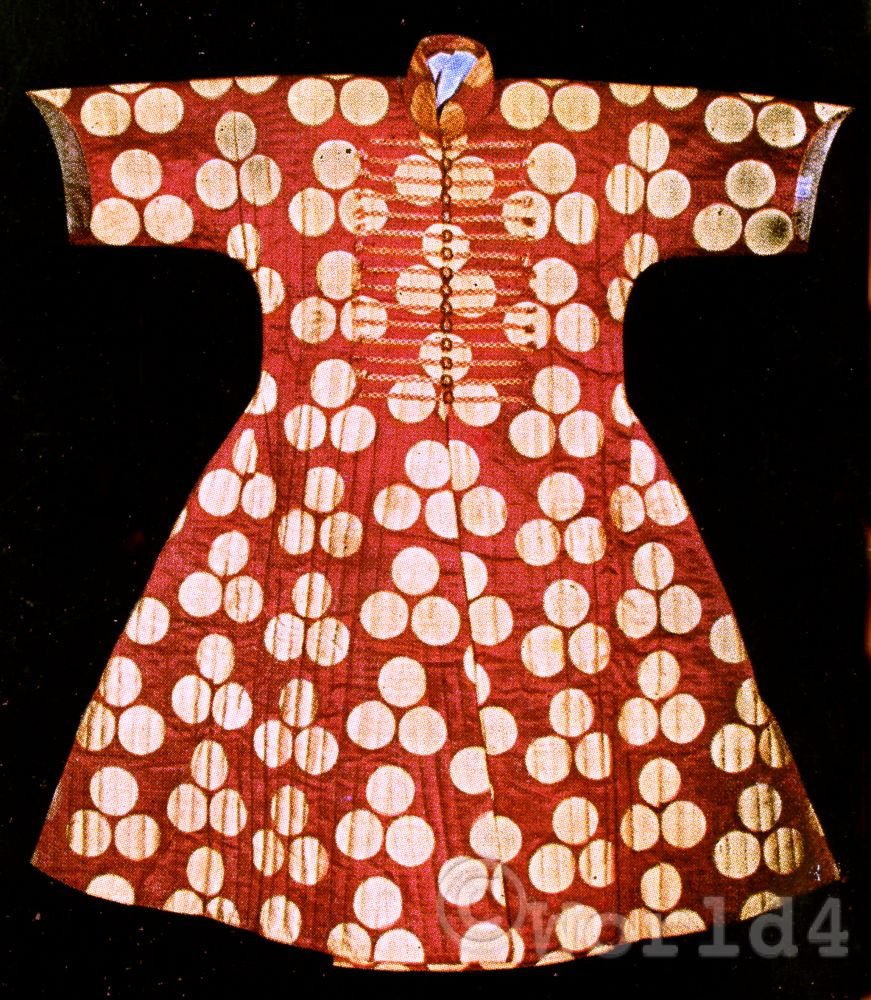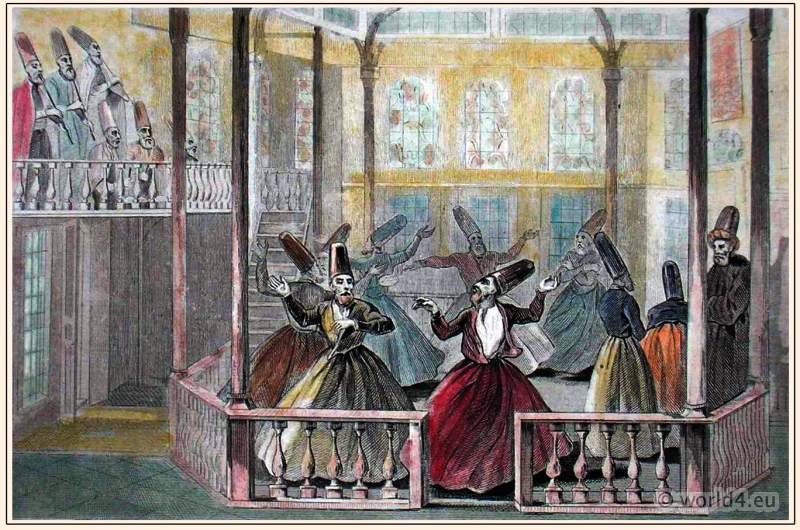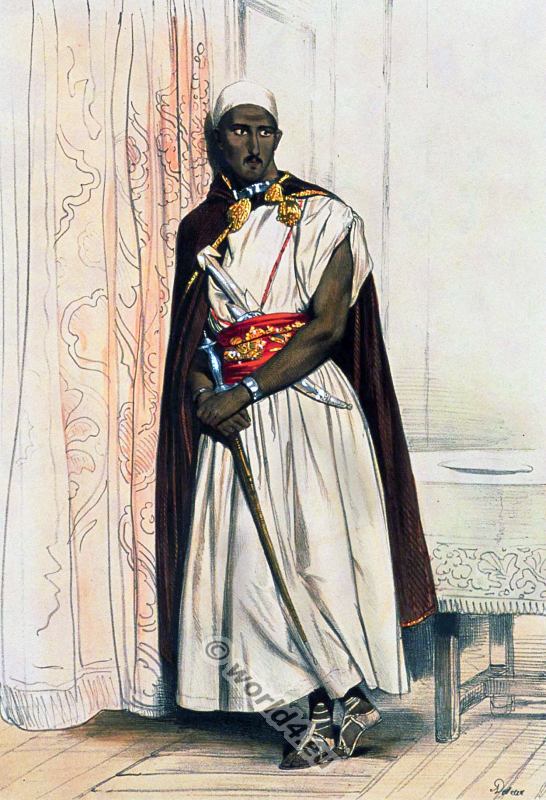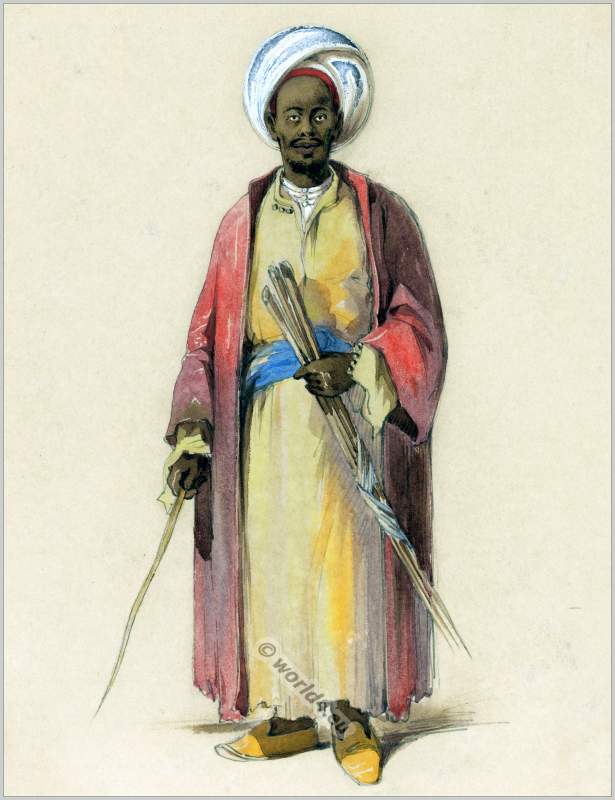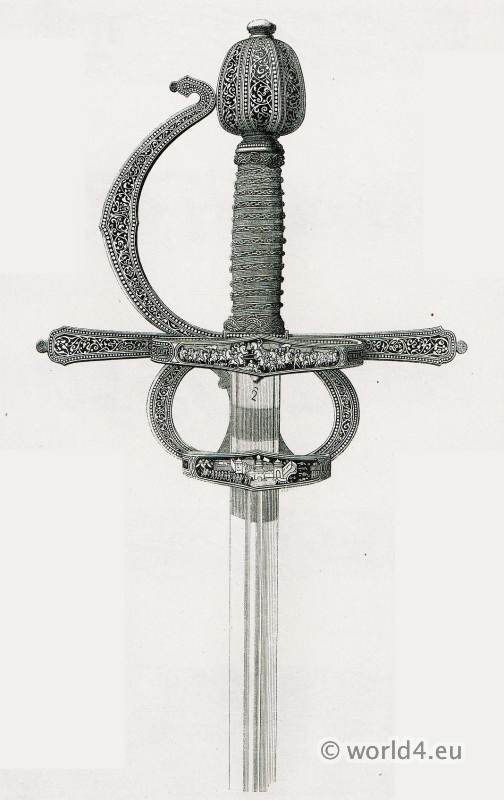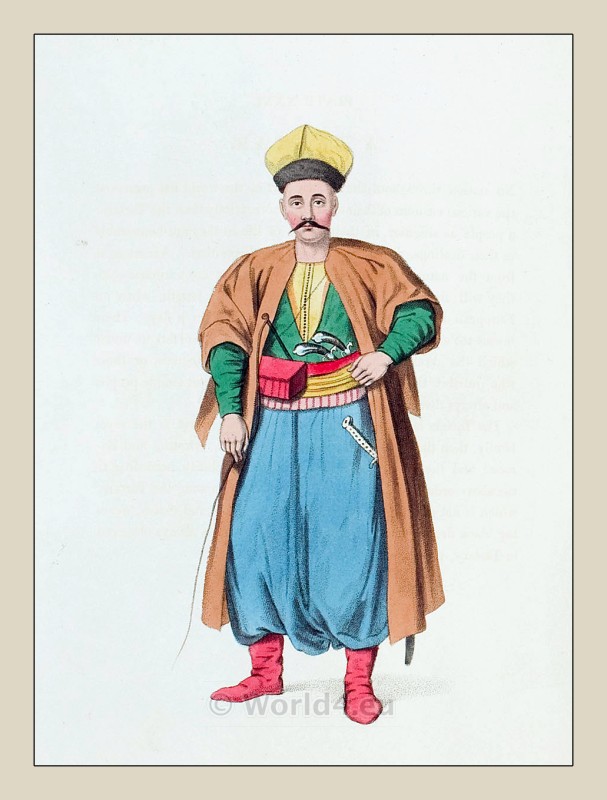A Sword Bearer to the Ottoman Sultans. Selictár Agá.
Life guard cavalryman, weapon bearer, stirrup holder, Sultan’s sword bearer.
IN the grand ceremony of girding on the saber, which takes place on the accession of the Grand Signior (Sultan), and of which a short account is given in the description to Plate XIV. (TURBAN-BEARER To the Grand Signior) the office of sabre-bearer forms a very important part.
The Grand Signior (Sultan) proceeds on horseback between two rows of Solacks, armed with bows and arrows, and so called from drawing the bow with their left hand; and surrounded by numerous attendants on foot, who also accompany the sabre-bearer. This office is always held by the Selictar Aga, who is dressed in a superb habit of cloth of gold, which is almost the only Turkish dress that fits close to the shape of the body.
This officer carries the imperial saber on his shoulders, till he comes to the little village of Youb. The Selictar Aga is also the chief, or commander, of a corps of cavalry called Selictars, who are not so much scattered over the empire as the Spahis, nor are they near so numerous.
Source: The costume of Turkey. Illustrated by a series of engravings; with descriptions in english. By Octavian Dalvimart. Printed by Howlett and Brimmer. Published in London, 1802.
